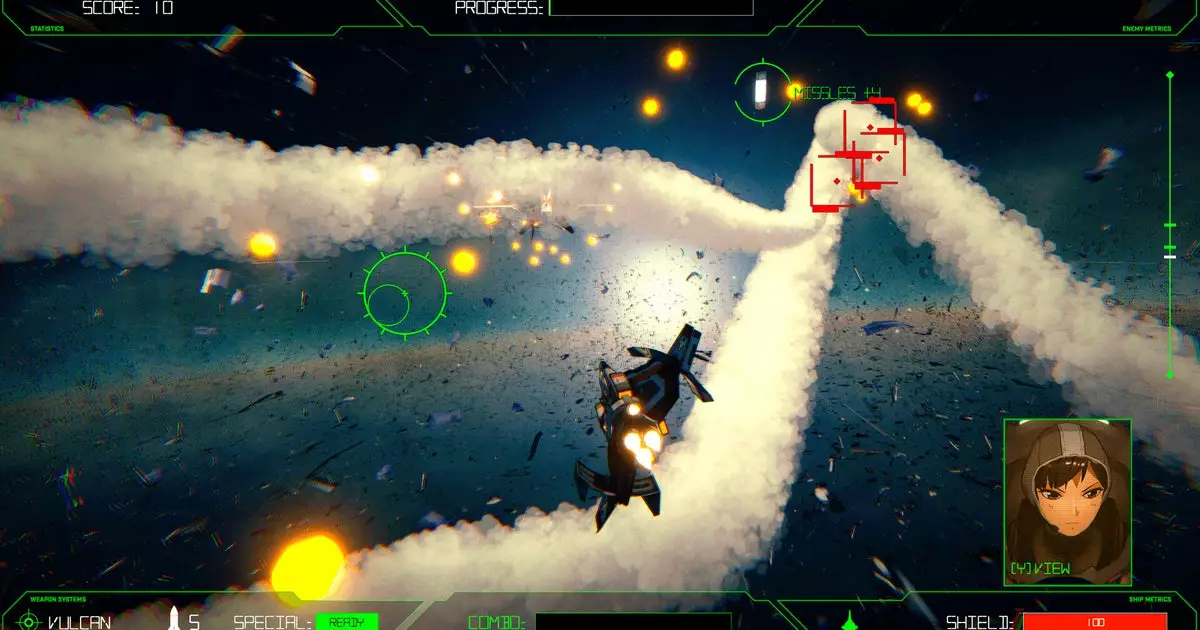Rogue Flight emerges as a must-watch title in the realm of arcade space combat games, subtly weaving together nostalgia from the iconic gaming eras of the 1980s and 1990s. With echoes of classics like StarFox, it promises a vibrant blend of exhilarating gameplay and visually striking aesthetics reminiscent of that revered anime style. As the gaming community eagerly awaits its release, the announcement trailer tantalizes players by showcasing a universe teeming with frenetic energy, where pilots navigate their ships through dazzling displays of acrobatic maneuvers while engaging in intense dogfights against a barrage of enemies.
What sets Rogue Flight apart is its commitment to storytelling. With a branching narrative path, it allows players to immerse themselves in a universe where their choices influence the outcome. This layered approach not only enhances replayability but also invites players to emotionally invest in characters and their journeys. Adding an intriguing twist, the inclusion of a roguelite mode introduces elements of permadeath, amplifying the stakes and ensuring that each battle carries a sense of urgency and consequence.
Customization and Voices: A Cultural Mosaic
Customization is a key feature that appeals to players’ desires for personalization in gaming. The ability to modify both spacecraft and pilot creates a unique experience, allowing individuals to reflect their personal tastes and play styles. This level of customization broadens engagement, as players seek to craft their perfect avatar in the celestial warfare landscape.
Moreover, the voice cast represents a noteworthy focal point of the marketing strategy. Drawing from respected Japanese talents associated with anime powerhouses like Sailor Moon and Neon Genesis Evangelion, the inclusion of both native and English-speaking voice actors effectively bridges cultural gaps. However, the reliance on voice performances may not resonate with all players; dubs vs. subs debates often linger in anime circles, showcasing the polarizing nature of localization in gaming.
The Dichotomy of Aesthetic and Tone
Yet, the game’s aesthetic encapsulation is what evokes the most intrigue. While broad themes of flashy space combat appeal to adrenaline junkies, the underlying sentiment is one of melancholy. The archetypal anime narratives that explore despair and the burdens of existence resonate profoundly with many. Unlike conventional narratives that are often littered with tropes of power and victory, Rogue Flight hints at deeper emotional undertones—examining the struggles of pilots who transform their internal chaos into formidable weapons of war.
This unique juxtaposition of vibrant visuals and darker tones invites players to ponder the burdens they carry. The pilot’s journey reflects a universal struggle, positioning Rogue Flight as more than just a mindless shooting game; it becomes a canvas for exploring themes of existential angst through its craft.
Rogue Flight stands as an exciting addition to the world of arcade games. With its compelling blend of nostalgia, customization, and emotional depth, it dares to venture beyond superficial gameplay. As players prepare to pilot their ships across the cosmos, they also embark on an introspective journey that grapples with the complexities of existence, making it a truly alluring experience. As the release date approaches, anticipation mounts for a game that promises to deliver both fun and profound engagement in equal measure.

